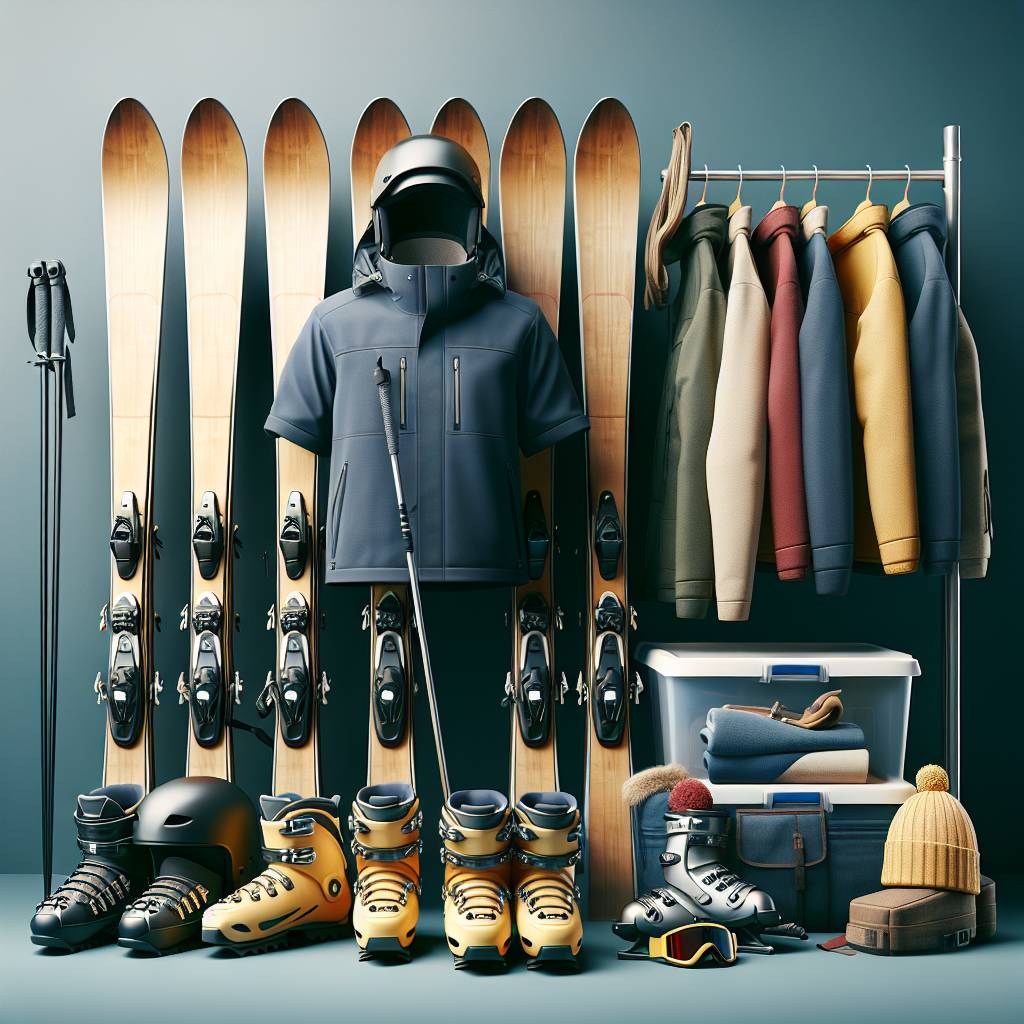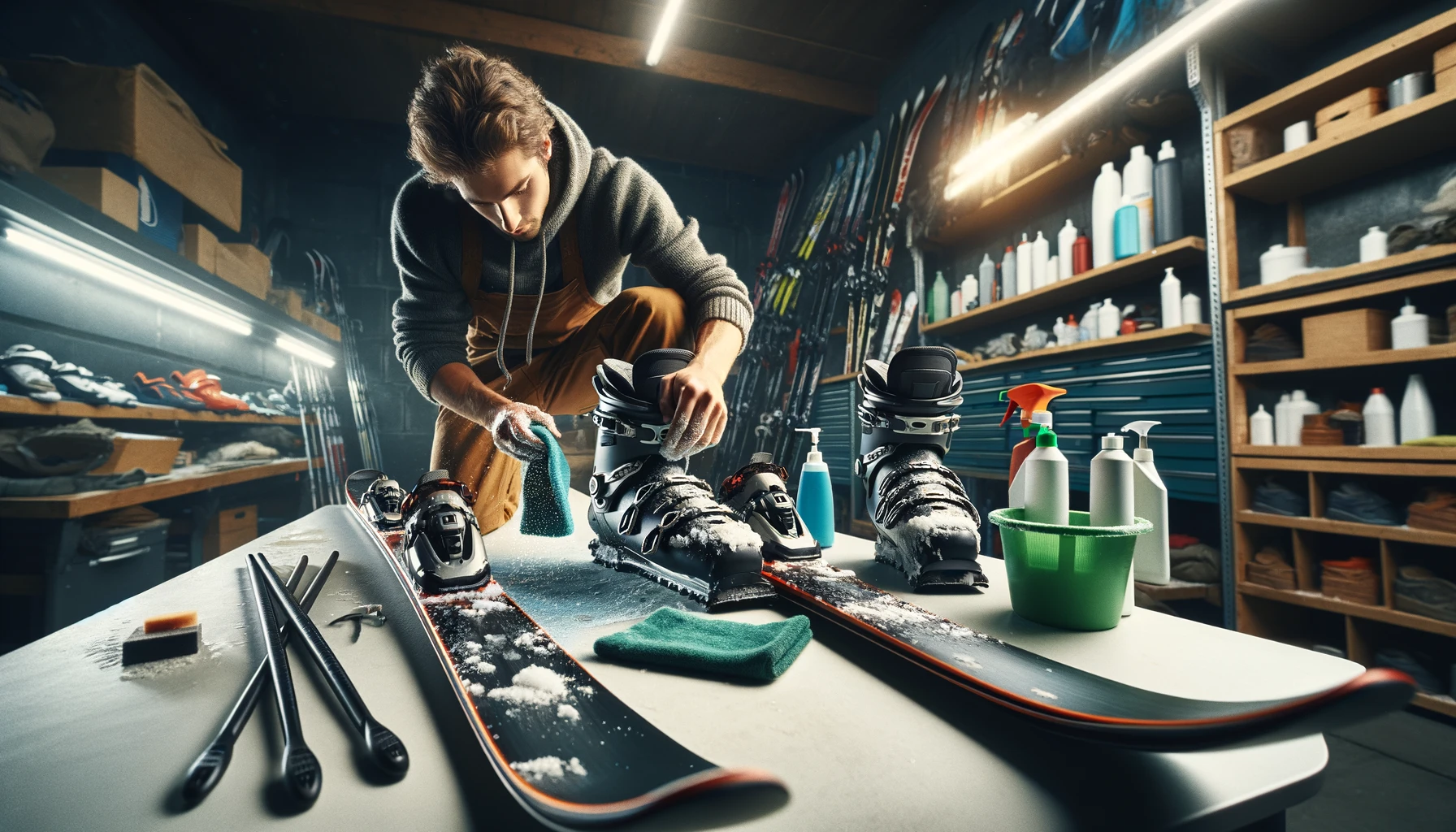As the ski season ends and the snow begins to melt, it’s time to start thinking about properly storing your ski equipment. From skis and boots to poles and helmets, storing your gear correctly will extend its lifespan and ensure that it is ready for your next winter adventure. Whether you’re a seasoned pro or a beginner, this guide will provide tips and tricks for safely storing your ski equipment during the off-season so you can hit the slopes with ease and confidence when the snow starts falling again.
Importance of proper ski equipment storage
Proper storage of your ski equipment is crucial to maintaining its performance and longevity. Improperly stored gear can develop rust, molds, and other damages, hindering its functionality. The boots may lose their shape, and skis can get warped. Equipment exposed to extreme temperatures can suffer from material degradation. By storing your equipment correctly, you protect your investment and ensure your gear is ready to provide optimal performance when the ski season returns.
Preparing your ski gear for storage
Before you stash away your equipment in your outdoor storage shed:
- Take the time to clean everything thoroughly. This includes skis, poles, boots, and even your ski apparel.
- Begin with your skis; remove any residual snow or ice, then use a soft cloth to wipe them down.
- Pay extra attention to the bindings and remove any grime that might have accumulated during the season.
Poles also need a good wipe down, ensuring the grips are dirt-free. For your boots, remove the liners and let them air out for a couple of days to eliminate moisture and possible odors. Once they’re dry, you can replace them. Washing your ski apparel according to their care labels will help maintain quality and function. This preparation stage is essential in keeping your ski gear in the best shape possible, ready for the next ski season.
Ideal storage conditions for ski equipment

The ideal environment for storing ski equipment is in a cool, dry place away from direct sunlight. Exposure to excessive heat or moisture can cause damage. Avoid storing equipment in basements or garages where humidity levels can fluctuate. Similarly, storing equipment near a heater or in direct sunlight can warp or dry out materials. Always keep your gear in a temperature-controlled room where the conditions remain consistent.
Proper storage techniques for skis and poles
When it comes to your skis and poles, strategic storage is key. Firstly, you should always store your skis base-to-base (the curved side of the ski) to prevent accidental scrapes or scratches. You can then place them in a ski bag, though make sure it is well-ventilated to avoid trapping moisture, which can cause rust. When positioning them, avoid leaning them against the wall, as this can lead to warping. Instead, consider a wall mount or rack that allows you to hang your skis horizontally.
Similarly, your poles should be stored upright in a cool, dry place. Avoid placing heavy items on top of them to prevent bending or damage. A dust cover or similar protective layer for both skis and poles can help keep them free of dust and other particulates. However, ensure any covers are breathable to prevent condensation buildup. These storage techniques will help keep your skis and poles in optimal condition, ready for the next ski season.
Storing ski boots correctly
Store ski boots buckled up to help maintain their shape during the off-season. Keep them upright in an excellent, dry location. Avoid placing them near heat sources as it can warp the plastic. To prevent unwanted odors, consider using a boot dryer or deodorizing product. Never store boots while damp, as this could lead to mold or mildew growth. To protect against dust, consider a breathable boot bag. These simple steps can ensure your boots are comfortable and functional for your next skiing adventure.
Taking care of ski apparel
After washing and thoroughly drying your ski apparel, fold or hang them to maintain their shape and functionality. Store them in a dry, dark place, avoiding damp or humid areas to prevent mildew. For jackets and pants, use hangers that provide good support to avoid stretching or deforming. Gloves and hats can be stored in breathable bins or bags. Goggle lenses should be kept in their protective cases to prevent scratches. These steps will help keep your ski apparel in excellent condition for your next trip down the slopes.
Regular check-ups during the season
Even during the off-season, it’s important to periodically check your ski gear. Look for signs of rust, mold, or physical damage. Inspect the bindings on your skis and the buckles on your boots for malfunctions. If your equipment is stored in a bag, ensure it’s still breathable and does not trap moisture. Remember, early detection of potential problems can save your gear from irreversible damage.
Off-season tips for ski equipment storage
Consider investing in storage solutions designed for ski gear, like racks or bags with ventilation. Also, rotate the position of your skis occasionally to prevent warping. Use silica gel packs in storage areas to absorb moisture. Avoid handling the gear with bare hands, as oils can cause rust. Lastly, don’t forget to re-wax your skis before storing them; it creates a protective layer that prevents drying out and rust. These off-season tips can make a difference in maintaining your ski equipment’s prime condition.

Properly storing your ski equipment during the off-season is an investment in the longevity and performance of your gear. It may require some effort and time, but ensuring your equipment is ready for the next season is worth it. Make it a part of your post-ski season routine, and your gear will always be in prime condition, ready for your next winter adventure. Remember, proper care can extend the life of your equipment, save you money, and improve your skiing experience. Happy skiing!


